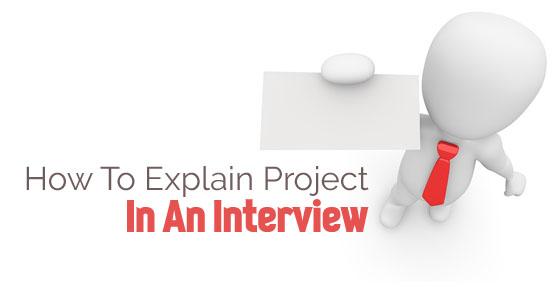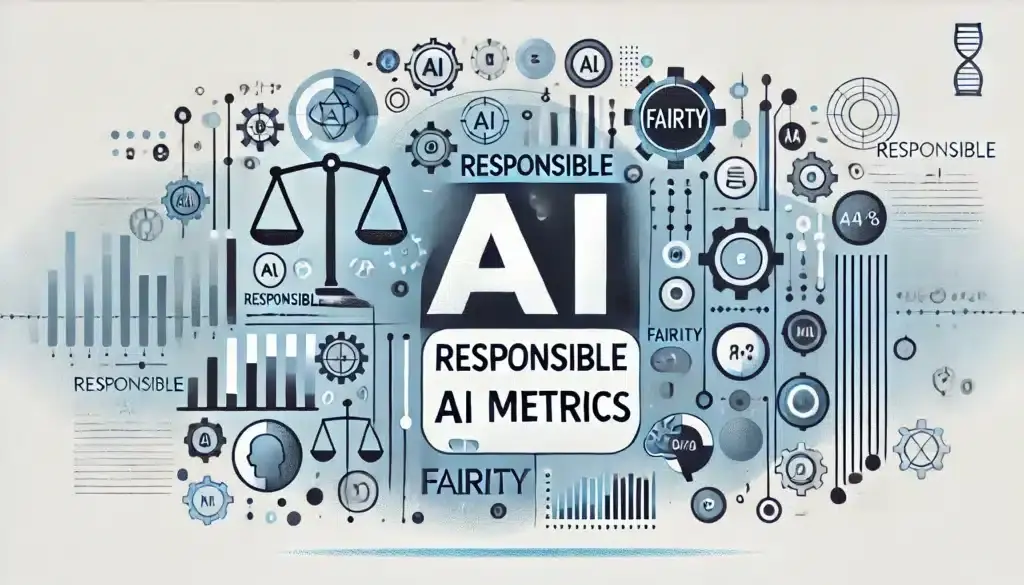How Great ML Engineers Turn Uncertainty into Opportunity
There’s one moment every machine learning (ML) candidate dreads, the silence that follows a question they don’t know how to answer.
Maybe the interviewer just asked about multi-armed bandits, or how you’d handle concept drift in a production pipeline, and suddenly, your brain blanks.
Your heart rate spikes. Your throat tightens. You start frantically searching your memory for something, anything, that sounds smart.
But here’s the truth:
Even the best ML engineers, the ones who build models at Google, Anthropic, or OpenAI, don’t always know the answer in interviews.
What separates them from everyone else isn’t what they know, it’s how they respond when they don’t.
“In ML interviews, your reaction to not knowing often matters more than what you actually know.”
This blog breaks down exactly how to handle that moment, step by step, using communication psychology, reasoning frameworks, and examples from real ML interviews.
Check out Interview Node’s guide “How to Handle Curveball Questions in ML Interviews Without Freezing”
Section 1 - Why “I Don’t Know” Isn’t the End (It’s the Beginning)
In most interviews, candidates treat “I don’t know” as a death sentence.
In reality, interviewers see it as an opportunity, a test of your cognitive flexibility and scientific mindset.
ML engineering is full of ambiguity. Models fail. Data shifts. APIs break. There’s no one right answer, only thoughtful reasoning.
So when you don’t know something, the interviewer’s real question becomes:
“Can you stay calm, think systematically, and reason your way to a plausible solution?”
Here’s what experienced interviewers are silently evaluating in that moment:
| Hidden Evaluation Metric | What It Means |
| Self-awareness | Can you identify what you know vs. what you don’t? |
| Composure under uncertainty | Do you panic or slow down and reason logically? |
| Problem-solving structure | Can you make progress with limited information? |
| Communication clarity | Can you explain your reasoning transparently? |
| Collaboration mindset | Do you engage the interviewer as a thought partner? |
If you can demonstrate these five traits, you can turn “I don’t know” into a moment that builds trust instead of breaking confidence.
Section 2 - The 5-Step Framework: How to Respond When You Don’t Know an ML Answer
No one expects you to know everything, but everyone expects you to handle uncertainty professionally and intelligently.
What you say (and how you say it) in the 10 seconds after realizing you don’t know can make or break your interview impression.
Here’s the 5-step Interview Node Framework for handling unknowns gracefully and turning them into credibility moments.
Step 1: Breathe and Buy 2 Seconds
When you blank out, your first instinct is to fill the silence.
That’s your nervous system trying to avoid judgment, but rushing only makes it worse.
The first thing to do: pause for two seconds and breathe.
It’s not wasted time.
In neuroscience terms, that pause allows your prefrontal cortex (logic) to override your amygdala (panic).
Those two seconds do three things:
- They stabilize your breathing and tone.
- They make you appear composed.
- They give you microtime to decide your next move.
You can even add a natural “thinking phrase” while you pause, like:
“That’s an interesting question, let me think out loud for a moment.”
This phrase does two things at once, it signals composure and sets up your reasoning structure.
Check out Interview Node’s guide “The Psychology of Confidence: How ML Candidates Can Rewire Their Interview Anxiety”
Step 2: Clarify the Question (Narrow the Scope)
Often, you think you don’t know the answer because you’ve misunderstood the scope.
A quick clarification can instantly save you.
Try:
“Just to clarify, are you asking about the model training strategy, or how we’d monitor it in production?”
Or:
“Do you mean handling drift conceptually or implementing drift detection in code?”
This one-sentence move accomplishes three things:
- It buys you more time (without awkward silence).
- It reframes the question in your own words, which improves comprehension.
- It signals collaborative thinking, a major plus in ML system design interviews.
Many candidates discover, during this step, that they did know the answer, they just needed to anchor the question first.
Step 3: Decompose the Problem
If the question is still beyond your recall, don’t freeze, break it down into smaller components.
Every ML problem can be decomposed into three elements:
- Data: What’s available? What are the constraints?
- Model: What approach might fit the problem structure?
- Evaluation: What metrics or feedback would matter?
Even if you don’t know the exact algorithm or method, you can reason through this triad.
Example:
Interviewer: “How would you approach concept drift in an online model?”
You: “I’ll start by thinking about the data pipeline. If the data distribution changes over time, the first signal would appear in monitoring metrics. So I’d first track feature distributions, then consider retraining triggers or model decay thresholds.”
Even if you didn’t recall the term concept drift immediately, your reasoning shows understanding of its behavioral impact.
This kind of structured thinking earns far more points than guessing keywords.
Step 4: Use Partial Knowledge Transparently
Transparency builds credibility. Pretending to know something you don’t, or throwing jargon to cover gaps, kills it.
If you know part of the answer, say what you do know and describe how you’d find the rest.
Example:
“I’m not fully sure of the formal name for this technique, but I know it relates to handling non-stationary data distributions. I’d likely start by analyzing data drift and retraining frequency, then explore whether adaptive models or ensemble updates would help.”
This statement achieves three outcomes:
- Shows self-awareness and humility.
- Demonstrates scientific reasoning.
- Keeps the discussion alive, not stalled.
The interviewer now sees someone who thinks like a problem solver, not a memorizer.
Step 5: Re-Engage the Interviewer
When you’re stuck, the worst move is silent defeat.
The best? Turn it into collaboration.
You can re-engage by saying:
“I haven’t implemented this directly before, could I walk you through how I’d reason toward a solution?”
or
“I’m not sure of the specific library function here, but could I outline a high-level strategy first?”
This transforms your interview dynamic, suddenly, you’re not being tested, you’re problem-solving together.
It also demonstrates a trait that recruiters call learning agility, your ability to make progress with incomplete information.
That’s what differentiates strong ML engineers in real work, and interviewers know it.
Check out Interview Node’s guide “Behavioral ML Interviews: How to Showcase Impact Beyond Just Code”
Bonus Tip - Frame “I Don’t Know” Positively
If you do need to admit you truly don’t know, avoid apologetic phrasing like:
“Sorry, I don’t know.”
Instead, reframe it with curiosity and composure:
“That’s an area I haven’t explored deeply yet, but I’d approach it by first checking how similar problems were handled in X system.”
That one sentence turns a gap into a growth mindset signal.
Interviewers walk away thinking:
“They don’t know everything, but they think like someone who could learn it fast.”
And that’s what gets people hired.
Key Takeaway
When you don’t know an answer, you’re not being tested on knowledge, you’re being tested on composure.
Following this 5-step framework —
- Breathe
- Clarify
- Decompose
- Use partial reasoning
- Re-engage collaboratively —
can turn your weakest moment into your strongest impression.
Because interviewers don’t remember the question you missed.
They remember how you handled it.
“Not knowing isn’t failure. Freezing is.”
Section 3 - Real Examples: How to Apply This Framework in Common ML Interview Scenarios
Not knowing the answer isn’t what disqualifies you.
It’s how you behave in the seconds after that determines whether you look like a thoughtful engineer, or an unprepared one.
To make this real, let’s walk through how top-performing candidates use the 5-step framework in three typical ML interview scenarios:
- Coding round
- System design round
- Applied reasoning or business-impact round
Scenario 1 - The Coding Round: When You Forget an Implementation Detail
Question:
“Can you implement the F1 score from scratch using Python?”
You know it involves precision and recall, but you can’t remember the exact formula.
Here’s how a strong candidate applies the 5-step framework instead of panicking.
Step 1 - Breathe and pause:
“Good question, let me think through the components first.”
This pause immediately projects composure and engagement.
Step 2 - Clarify:
“To confirm, would you like me to assume binary classification, or should I handle multiclass as well?”
This clarification narrows scope and buys you time to reason.
Step 3 - Decompose:
“The F1 score is the harmonic mean of precision and recall. Precision is TP/(TP+FP), and recall is TP/(TP+FN). So I’d compute those individually first, then combine them.”
Even without recalling the exact code, you’ve now shown conceptual fluency and structure.
Step 4 - Use partial knowledge:
“I don’t recall the exact library call, but I can manually compute it once I get those values, it’s roughly 2 × (precision × recall) / (precision + recall).”
Step 5 – Re-engage:
“Would you like me to write a simple Python function for the binary case?”
✅ The interviewer now sees:
- Calm reasoning under memory lapse
- Correct conceptual understanding
- Collaborative attitude
Even if you didn’t recall the exact syntax, your thinking proved mastery.
Check out Interview Node’s guide “Cracking the Machine Learning Coding Interview: Tips Beyond LeetCode for FAANG, OpenAI, and Tesla”
Scenario 2 - The System Design Round: When You Don’t Know the Architecture
Question:
“Design an ML system for real-time fraud detection.”
You’ve read about fraud models, but “real-time” throws you off, you’re not sure what pipeline components apply.
Here’s how the framework works live.
Step 1 - Pause:
“Interesting. Let me take a moment to outline how I’d approach this.”
That pause tells the interviewer you’re collecting your thoughts, not panicking.
Step 2 - Clarify:
“Are we assuming we’re processing batch data from transactions or streaming events in real-time?”
Now you’ve forced scope clarification, which most candidates forget to do.
Step 3 - Decompose:
Start top-down reasoning.
“At a high level, I’d break this into three components, the data ingestion pipeline, model inference latency, and feedback loop for retraining.
For streaming detection, latency is key, so we’d likely deploy a lightweight model like logistic regression or an ensemble on a feature store optimized for low-latency reads.”
You’re not giving every architecture detail, just reasoning logically around constraints.
Step 4 - Use partial knowledge:
“I’m not fully sure about the specific streaming library we’d use here, maybe Kafka or Pub/Sub, but the core idea is near-real-time inference with buffered batch retraining.”
Step 5 - Re-engage:
“Would you like me to sketch the online vs. offline paths for this system?”
✅ This answer communicates:
- Systems thinking
- Business-awareness of latency constraints
- Growth mindset under ambiguity
You’ve demonstrated engineering reasoning, which is far more valuable than knowing every tool.
Scenario 3 - The Applied Reasoning Round: When You Don’t Know the “Why” Behind a Result
Question:
“Your model’s accuracy suddenly dropped by 15% last month. What could be happening?”
You don’t recall all possible causes of model decay, but instead of guessing, you reason it out.
Step 1 - Breathe:
“Okay, let’s break this down logically.”
You sound calm and confident.
Step 2 - Clarify:
“Is this an online model serving live data, or a static batch model retrained periodically?”
Now you’re engaging the interviewer and gathering parameters.
Step 3 - Decompose:
You reason through the pipeline:
“If performance dropped suddenly, the issue could be in data, model, or environment.
- Data: maybe a distribution shift, like user behavior changes.
- Model: drift due to stale weights or feature importance decay.
- Environment: API or version mismatch, or monitoring gap.”
Step 4 - Use partial knowledge:
“I’m not entirely sure of the term, but this seems related to concept drift, when the target variable’s distribution changes.”
Step 5 - Re-engage:
“Would it make sense to discuss what retraining schedule or drift-detection metrics we could apply here?”
✅ The result:
You’ve transformed “I don’t know” into a diagnostic reasoning demonstration.
You didn’t just fill the silence, you filled it with thinking.
Check out Interview Node’s guide “Beyond the Model: How to Talk About Business Impact in ML Interviews”
Scenario 4 - Behavioral Follow-Up: When You’re Asked About a Past Mistake
Question:
“Tell me about a time you made a wrong technical choice in an ML project.”
You blank on a polished example.
Instead of freezing, you apply the same framework.
“Let me think for a second, most of my past projects went well, but one that stands out is when I overcomplicated a pipeline with unnecessary deep learning.
I realized later that a simpler tree-based model would’ve been faster and easier to maintain.
What I learned was to always validate the problem’s complexity before jumping into advanced models.”
✅ You’ve just turned a gap into:
- A story of growth
- Self-awareness
- Engineering maturity
Key Patterns to Notice
Across all examples, the same structure wins every time:
- Pause and reframe instead of panicking.
- Clarify scope before assuming complexity.
- Reason visibly so the interviewer follows your logic.
- Admit partial knowledge with confidence.
- Collaborate by inviting discussion.
That’s why strong candidates get callbacks even when they “miss” questions, because interviewers remember clarity and composure, not correctness.
“You don’t get hired for knowing everything, you get hired for thinking like someone who can figure anything out.”
Section 4 - The Psychology Behind Handling the Unknown (Why Calm Thinking Beats Panic Every Time)
When your mind goes blank in an ML interview, it’s not because you’re unprepared.
It’s because your brain, the same system that evolved to detect danger, can’t tell the difference between “I don’t know the answer” and “I’m in trouble.”
That’s not failure.
That’s biology.
The good news?
You can retrain it.
Understanding why your brain behaves this way helps you regain control in real time, and project the calm confidence interviewers associate with top-tier candidates.
a. The Neuroscience of Freezing
Here’s what actually happens when you get a question you don’t know:
- Threat detection: The moment your brain realizes “I might fail this,” your amygdala fires.
It’s the ancient fear center that triggers your fight–flight–freeze response. - Cortisol surge: Stress hormones flood your system, speeding up heart rate and tightening muscles, but they also redirect blood away from your prefrontal cortex, the region responsible for logic, speech, and reasoning.
- Cognitive silence: Your working memory, the short-term storage for active thinking, momentarily shuts down.
That’s why you “know” the answer later but can’t recall it in the moment.
You’re not stupid. You’re stressed.
This “cognitive tunnel vision” is the same thing pilots, surgeons, and chess players experience under time pressure.
The difference is, they train their nervous systems to stay functional when the stress response kicks in.
You can too.
Check out Interview Node’s guide “The Psychology of Interviews: Why Confidence Often Beats Perfect Answers”
b. Why Interviewers Care About Calmness More Than Correctness
ML interviews are intentionally designed to test reasoning under uncertainty, not recall.
Why? Because real-world ML work is uncertainty.
You’ll never have perfect data, perfect labels, or perfect model performance.
So, interviewers want to see if you can remain cognitively stable when the path forward isn’t obvious.
When you stay calm and reason out loud, even while not knowing the answer, you’re demonstrating:
- Stress resilience (you stay functional)
- Cognitive control (you can still structure thoughts)
- Collaboration potential (you think with, not against, others)
Interviewers interpret calm reasoning as leadership.
Panic reads as fragility.
That’s why “thinking aloud clearly” is often a stronger signal than “answering perfectly.”
Check out Interview Node’s guide “How to Think Aloud in ML Interviews: The Secret to Impressing Every Interviewer”
c. How to Rewire Your Stress Response
Your goal isn’t to avoid stress, it’s to train your brain to function through it.
This is called stress inoculation training, a technique used by elite professionals in high-pressure environments.
Here’s how to apply it to ML interviews:
Step 1 - Simulate Uncertainty Intentionally
During prep, don’t always practice questions you know.
Deliberately choose problems you can’t fully solve.
Then, force yourself to narrate your thinking aloud while staying calm.
You’re conditioning your brain to associate “I don’t know” with curiosity, not panic.
Over time, your amygdala stops firing as aggressively, because it’s no longer surprised.
Step 2 - Reframe the Trigger
When faced with a tough question, consciously change your self-talk.
Instead of:
“I’m failing.”
Say:
“I’m exploring.”
This one semantic change moves brain activity from the fear network (amygdala) to the reasoning network (prefrontal cortex).
It’s called cognitive reappraisal, and it’s been shown in multiple fMRI studies to reduce anxiety’s impact on working memory by up to 30%.
Step 3 - Build a Pre-Interview Reset Routine
Just like ML models need pre-processing, your mind does too.
Build a 2-minute ritual that stabilizes you before every interview:
- 4-6 breathing: inhale 4 seconds, exhale 6 seconds
- Drop your shoulders
- Smile lightly
- Tell yourself: “I’m here to reason, not to recite.”
This triggers the parasympathetic system (rest-and-digest mode), cutting cortisol and keeping your prefrontal cortex online.
d. The Confidence Loop
Confidence isn’t just mental, it’s chemical.
Every time you handle a tough question without freezing, your brain releases dopamine, reinforcing that “uncertainty = solvable.”
This creates what neuroscientists call a positive prediction loop:
- You face uncertainty.
- You stay calm.
- You solve or reason your way through.
- Your brain rewards the calm response.
The next time you face uncertainty, your system stays even calmer.
That’s how genuine confidence builds, not from fake positivity, but from repeated experiences of survival under uncertainty.
e. Reprogramming “I Don’t Know” Into a Growth Cue
You can even use this neuroscience to train your own “confidence anchor.”
Next time you hit a question you can’t answer, smile slightly and think:
“This is my chance to demonstrate how I think.”
It sounds small, but the act of reinterpreting uncertainty as an opportunity rather than a threat retrains your amygdala’s association pattern.
Over time, your brain stops seeing tough interviews as danger and starts viewing them as challenge mode.
This shift is why elite performers, from chess players to astronauts, appear calm under stress:
Their nervous systems are trained not to avoid pressure, but to use it as data.
The Key Takeaway
Your brain’s first reaction to “I don’t know” is fear.
Your job is to turn that into focus.
The candidate who can breathe, reframe, and reason under pressure doesn’t just pass interviews, they earn respect.
Interviewers remember calm thinkers the same way they remember great engineers:
Not for what they knew, but for how they handled the unknown.
“Fear says stop thinking. Confidence says keep reasoning.”
Conclusion - Turning “I Don’t Know” Into Your Professional Advantage
If there’s one universal truth in ML interviews, it’s this:
At some point, you will be asked something you don’t know.
It’s not a test of weakness, it’s a test of awareness.
Because real-world ML work is full of “I don’t knows”:
- You don’t know how new data will behave in production.
- You don’t know which feature will shift performance next quarter.
- You don’t know which architecture will scale cleanly until it breaks.
The best ML engineers aren’t the ones who always know, they’re the ones who keep reasoning when they don’t.
That’s what interviewers are really looking for.
They don’t want the perfect answer, they want to see composure, reasoning, and collaborative intelligence in motion.
“In ML interviews, mastery is measured not by what you recall, but by how you recover.”
When you apply the 5-step “Don’t Know Framework” —
- Breathe
- Clarify
- Decompose
- Use partial knowledge
- Re-engage collaboratively —
you don’t just survive uncertainty.
You signal seniority.
Because confidence in ML interviews doesn’t mean being flawless.
It means staying fluent, in reasoning, calmness, and curiosity, even when the question surprises you.
Check out Interview Node’s guide “The Psychology of Confidence: How ML Candidates Can Rewire Their Interview Anxiety”
FAQs: How to Handle “I Don’t Know” Moments in ML Interviews
1. Should I admit I don’t know something or try to guess?
Always admit it, but strategically.
You never want to “fake” knowledge. Instead, show partial understanding and reasoning steps:
“I’m not sure of the exact algorithm name, but I’d approach this by examining the data distribution first.”
Interviewers value honesty + logical process far more than shallow confidence.
2. How can I tell when it’s time to stop guessing and move on?
The rule: if your reasoning is no longer progressing logically, stop.
Say:
“I think I’ve explored the main angles I can at the moment, may I summarize my approach?”
This signals awareness, not defeat.
You’re showing that you know when to stop digging noise and start synthesizing signal.
3. What if the interviewer seems unimpressed when I admit I don’t know?
That’s okay, they’re testing composure, not emotion.
Maintain tone, stay positive, and ask clarifying questions.
Often, unimpressed faces are neutral evaluation modes, don’t read them emotionally.
Instead, re-engage:
“Would you like me to reason through possible approaches even if I don’t know the exact term?”
You just turned silence into collaboration.
4. What’s a good way to “sound confident” while being uncertain?
Confidence isn’t tone-deep, it’s structure-deep.
Use clear, structured language:
“Let’s break this down.”
“Here’s what I know so far.”
“If I had to approach this logically, I’d start with…”
Structure projects calm authority, even if your content isn’t complete.
5. Can I ask the interviewer for hints?
Yes, in the right way.
Interviewers often expect collaborative dialogue.
The key is to frame it intellectually, not dependently:
“I have two hypotheses, one about feature drift, another about data leakage. Would you prefer I expand on one of them?”
This turns hint-seeking into engagement, not hand-holding.
6. How do I recover after a completely failed answer?
Don’t apologize or over-explain.
Instead, pivot gracefully:
“That wasn’t the best answer, let me try reframing it differently.”
Or
“I realize I misunderstood earlier; here’s a cleaner approach.”
Interviewers love self-correction, it shows self-awareness and adaptability, not weakness.
7. What if I get stuck multiple times during the same interview?
If it happens more than once, own the pattern calmly:
“Seems like I’m hitting some gaps today, but I hope my reasoning shows how I’d approach learning and problem-solving.”
You’re reframing repeated uncertainty as evidence of humility and curiosity, traits that make great engineers teachable.
8. How do I rebuild confidence after an interview that went poorly?
After any tough interview, perform a post-mortem, not a post-mortification.
Write down:
- 3 questions you handled well
- 2 you missed
- 1 you’ll practice again tomorrow
This structured reflection prevents your brain from turning one bad experience into a general self-doubt loop.
9. Can I practice “not knowing” as a skill?
Absolutely, and you should.
During prep, intentionally ask yourself questions you can’t answer immediately.
Then, narrate your reasoning aloud.
This builds your cognitive resilience, teaching your brain that uncertainty is safe, not threatening.
Over time, you’ll find that you no longer freeze, you flow.
10. What’s the best mindset to carry into an ML interview?
The mindset of a scientist, not a student.
A student fears being wrong.
A scientist values discovery.
Every question is data.
Every “I don’t know” is a chance to reason, adapt, and improve.
“You’re not being tested to see if you’re perfect.
You’re being observed to see if you can stay logical when things aren’t.”
That’s the hallmark of every great ML engineer, and the exact skill every interviewer is hunting for.
Final Takeaway
The best ML interviews aren’t won by those who know everything, but by those who stay curious, structured, and calm when they don’t.
If you:
- Breathe before you speak
- Clarify before you answer
- Decompose before you guess
- Own your gaps without apologizing
- Re-engage the interviewer logically
…you’ll turn uncertainty into your advantage.
That’s how strong engineers think.
That’s how great communicators win.
And that’s how you turn “I don’t know” into a moment of credibility.
“Uncertainty doesn’t expose weakness. It reveals how you think.”






